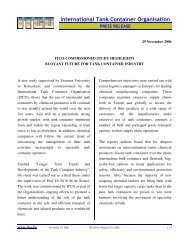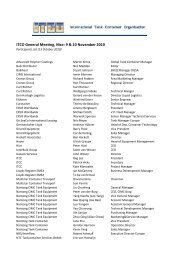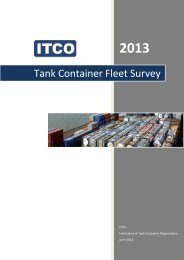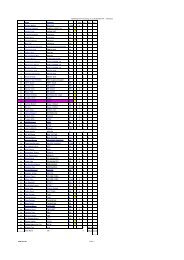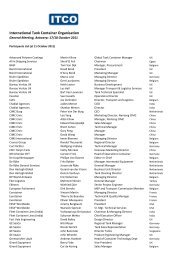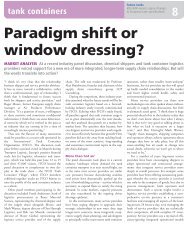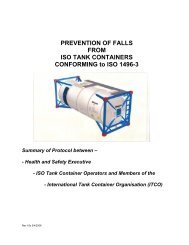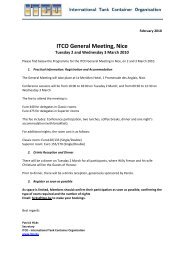You also want an ePaper? Increase the reach of your titles
YUMPU automatically turns print PDFs into web optimized ePapers that Google loves.
ICHCA International <strong>Safe</strong>ty Panel Briefing Pamphlet No 30<br />
A5.3.2 Transboundary movements under the Basel Convention<br />
A5.3.2.1 Transboundary movement <strong>of</strong> wastes is permitted to commence only when:<br />
notification has been sent by the competent authority <strong>of</strong> the country <strong>of</strong><br />
origin, or by the generator or exporter through the channel <strong>of</strong> the<br />
competent authority <strong>of</strong> the country <strong>of</strong> origin, to the country <strong>of</strong> final<br />
destination; and<br />
the competent authority <strong>of</strong> the country <strong>of</strong> origin, having received the<br />
written consent <strong>of</strong> the country <strong>of</strong> final destination stating that the<br />
wastes will be safely incinerated or treated by other methods <strong>of</strong><br />
disposal, has given authorization to the movement.<br />
A5.3.2.2 In addition to the transport document required all transboundary movements<br />
<strong>of</strong> wastes shall be accompanied by a waste movement document from the<br />
point at which a transboundary movement commences to the point <strong>of</strong><br />
disposal. This document shall be available at all times to the competent<br />
authorities and to all persons involved in the management <strong>of</strong> waste transport<br />
operations.<br />
A5.3.2.3 In the event that packages and cargo transport units containing wastes are<br />
suffering from leakage or spillage, the competent authorities <strong>of</strong> the countries<br />
<strong>of</strong> origin and destination shall be immediately informed and advice on the<br />
action to be taken obtained from them.<br />
A5.3.3 Classification <strong>of</strong> wastes<br />
A5.3.3.1 A waste containing only one constituent which is a dangerous substance<br />
subject to the provisions <strong>of</strong> the IMDG Code shall be regarded as being that<br />
particular substance. If the concentration <strong>of</strong> the constituent is such that the<br />
waste continues to present a hazard inherent in the constituent itself, it shall<br />
be classified according to the criteria <strong>of</strong> the applicable classes.<br />
A5.3.3.2 A waste containing two or more constituents which are dangerous<br />
substances subject to the provisions <strong>of</strong> the IMDG Code shall be classified<br />
under the applicable class in accordance with their dangerous<br />
characteristics and properties as described below.<br />
A5.3.3.3 The classification according to the dangerous characteristics and properties<br />
shall be carried out as follows<br />
determination <strong>of</strong> the physical and chemical characteristics and<br />
physiological properties by measurement: or calculation followed by<br />
classification according to the criteria <strong>of</strong> the applicable class(es); or<br />
if the determination is not practicable, the waste shall be classified<br />
according to the constituent presenting the predominant hazard.<br />
A5.3.3.4In determining the predominant hazard, the following criteria shall be taken<br />
into account:<br />
if one or more constituents fall within a certain class and the waste<br />
presents a hazard inherent in these constituents, the waste shall be<br />
included in that class; or<br />
if there are constituents falling under two or more classes, the<br />
classification <strong>of</strong> the waste shall take into account the order <strong>of</strong><br />
precedence applicable to dangerous substances with multiple<br />
hazards.<br />
Page 66 ©ICHCA International Limited



